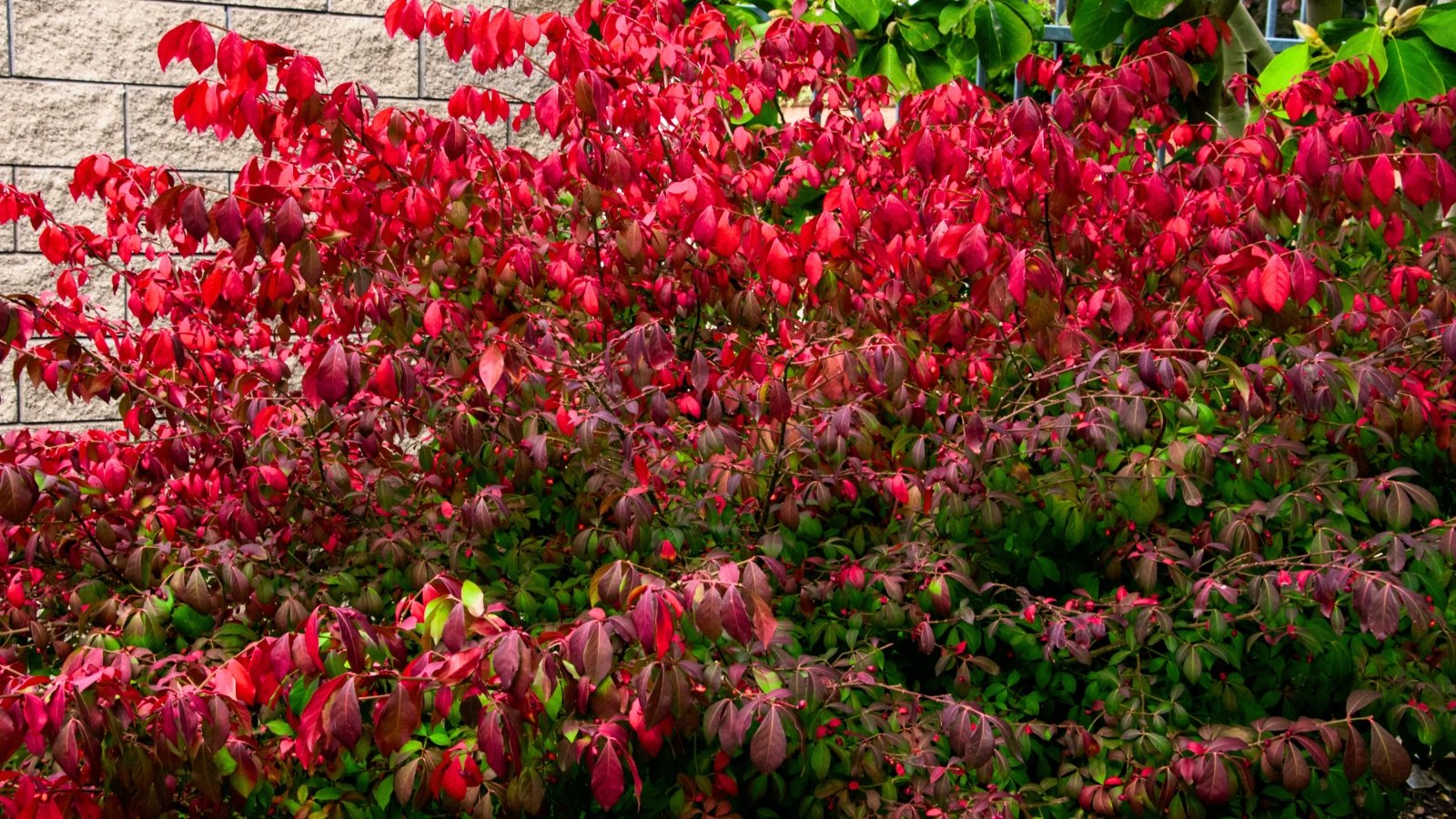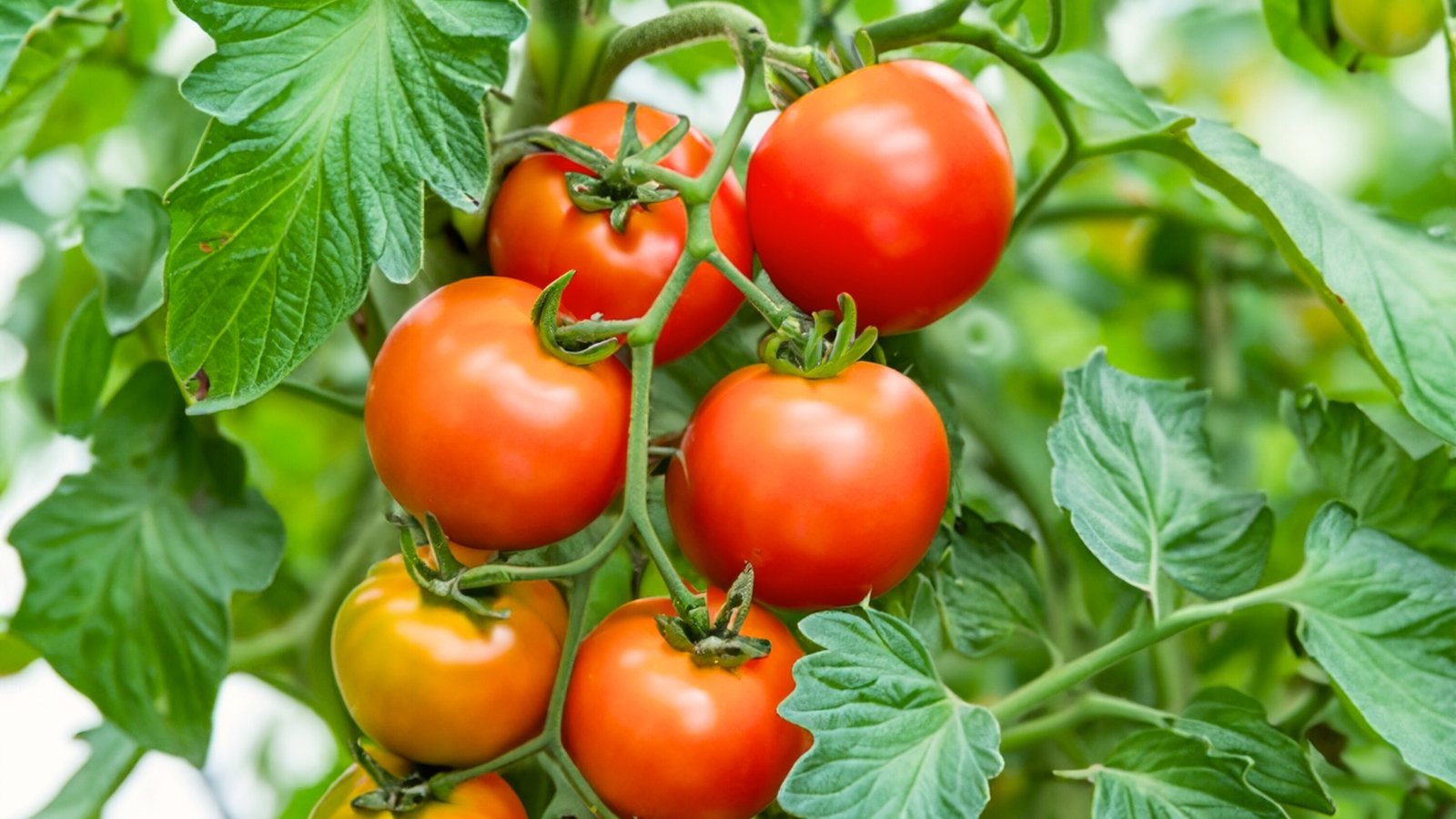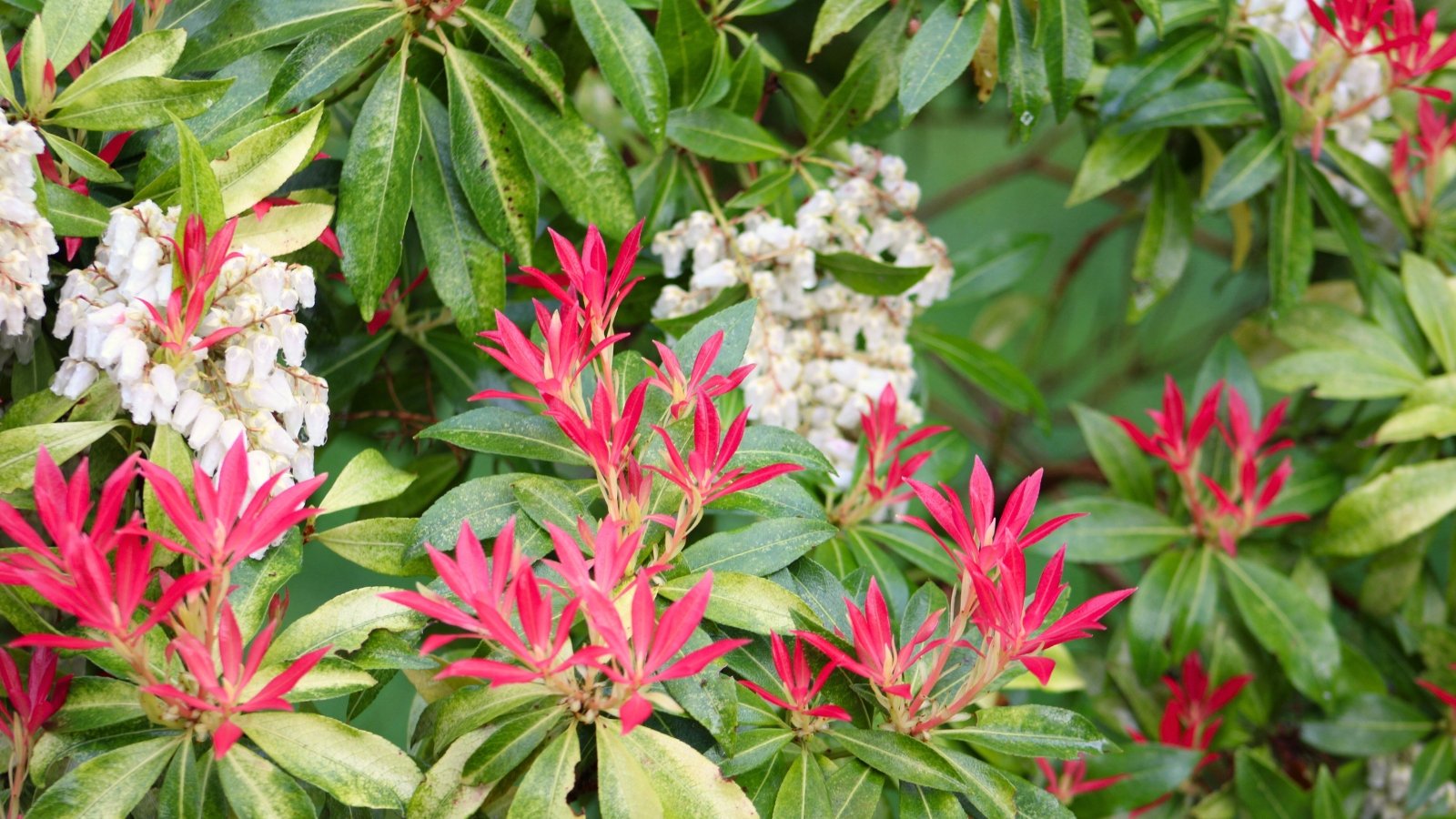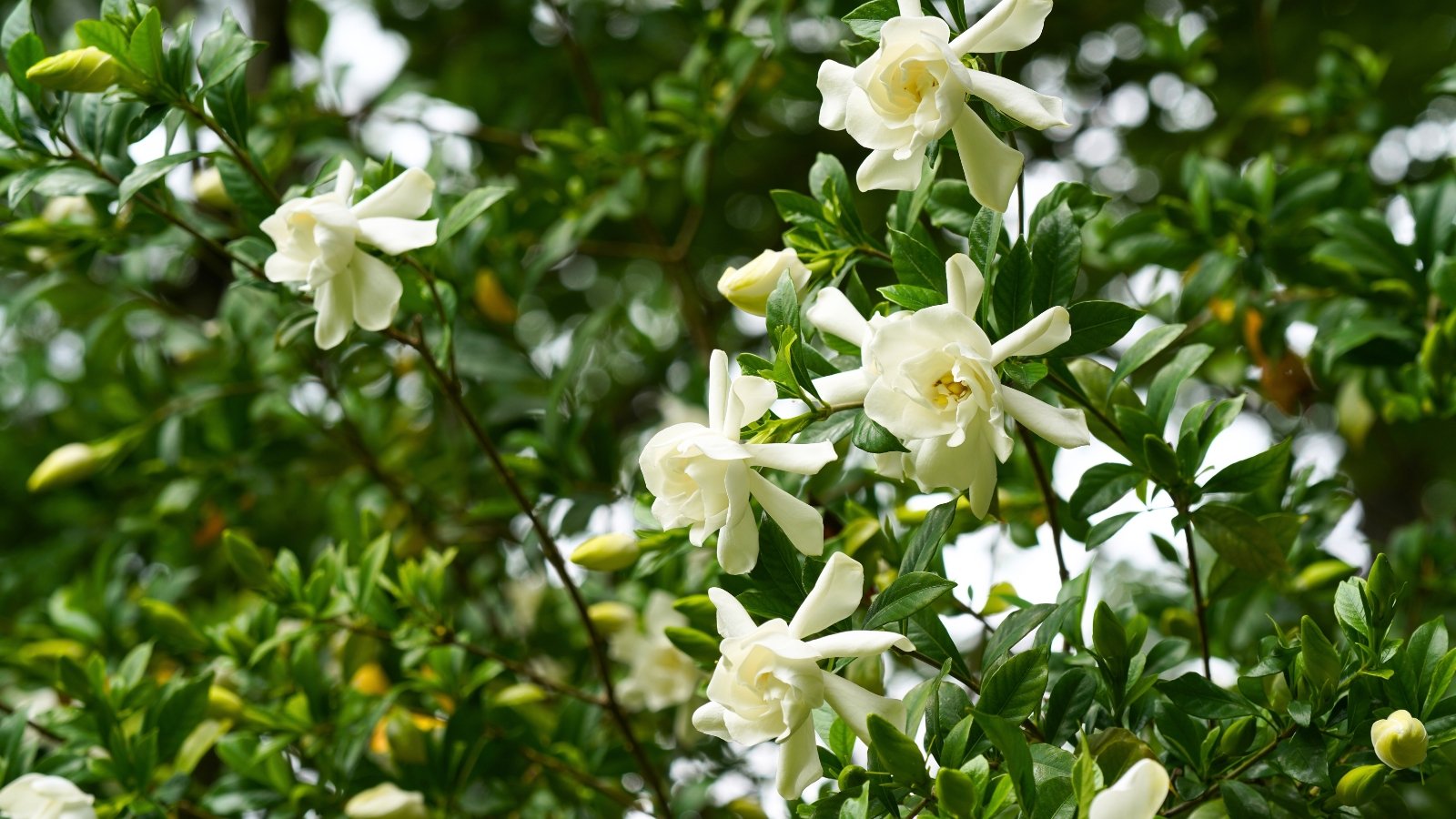PROTECT YOUR DNA WITH QUANTUM TECHNOLOGY
Orgo-Life the new way to the future Advertising by AdpathwayBlueberries are summertime favorites for their sweet taste, versatile uses, and antioxidant-rich fruits. The shrubs also bring ornamental appeal and ecological value year-round. Blueberries originate in North America, and a century of cultivation brings us today’s varieties suited to particular growing regions and situations. The blossoms attract pollinators with their bud break in spring, and the berries make prime forage for birds and wildlife (if you have plenty to share).
Whether low-bush groundcovers or high-bush hedges, blueberries bring landscape interest with pretty blue-green foliage and good fall color. The buds for the petite white blossoms set in late summer and early fall to open in spring. The buds extend the interest before the fruits set. While they have a particular host of growing requirements, they need little else to thrive. Provide acidic, well-draining soils, consistent moisture, and prune for maximum vigor.
With good garden partners, blueberries bridge the ornamental and edible display. Pairing them with complementary plants boosts yields and vigor. Companion plants for blueberries offer benefits that support growth, and the best pairings suppress weeds, retain soil moisture, attract pollinators, and even repel pests.
Poor partners do the opposite; they may attract the same pests and diseases, compete for water, light, and nutrients, and smother growth. We’ll explore what not to plant with blueberries and which selections make good companions for long-lived rewards.
Suckering Shrubs
 Plant blueberries with friendly neighbors to avoid tough competition.
Plant blueberries with friendly neighbors to avoid tough competition.Blueberries are attractive and functional as a singular hedge, in a mixed shrub border, or as a low-growing groundcover, depending on the type. Delicate foliage and petite bell flowers add textural contrast and visual interest. They bring scarlet and orange fall color, and some are even evergreen (Vaccinium darrowii). They complement an array of deciduous and evergreen species, blending as both an ornamental and fruit-bearing specimen.
Blueberries can live for decades but have a slow and steady path to maturity. Slow-growing, they begin bearing their heaviest yields after about five years. It can take as many as 10 years to reach maximum size. They also have shallow roots, making them reliant on regular water and organic soils near the soil surface.
Suckering shrubs and those with aggressive growth can outcompete nearby Vaccinium. Avoid planting suckering types in close proximity (or at all). To give blueberries the best foundation for nutrient and water access as they take time to reach maturity, well-behaved neighbors are better options.
Avoid planting these shrubs with blueberries:
- Eleagnus
- Burning Bush
- Japanese Barberry
- Privet
Nightshades
 Likes its own patch to avoid nutrient battles nearby.
Likes its own patch to avoid nutrient battles nearby.Nightshade vegetables often tolerate slightly acidic soils, but blueberries require a lower pH than most prefer. Acid-loving blueberries rely on a pH between 4.0 and 4.8. Tomatoes and others in the group lean toward neutral, with a slight acidity at 6.2 to 6.8.
The Solanaceae family members can also compete for nutrients and other resources. While blueberries aren’t heavy feeders, they rely on ready soil nutrients and moisture to thrive (especially with their shallow roots). Tomatoes and others are heavy feeders to do all their growing and producing in a single season.
They may absorb the bulk of the resources with less remaining for the berries. The vegetables may also invite pests and diseases that transfer to the fruiting shrubs. Separate them in the garden to give both adequate resources and soil conditions they need.
Nightshades not grow with blueberries include:
- Tomatoes
- Peppers
- Potato
- Eggplant
- Tomatillo
Brassicas
 Heavy feeders nearby can hog all the good nutrients.
Heavy feeders nearby can hog all the good nutrients.Brassica species like broccoli, cabbage, and kale are also heavy feeders. They may soak up nutrients and moisture before the shrubs can absorb them.
The leafy greens do well in slight acidity, but less so than the woodies. They lean a bit more neutral or even alkaline, as most prefer a pH between 5.8 and 8.5.
Some Herbs
 Keeping spreading herbs in pots saves the roots below.
Keeping spreading herbs in pots saves the roots below.Herbs like sage, basil, and chives make good pairings with blueberries. The perennial selections contain aromatic foliage that deters many common pests. Their essential oils have repellent qualities, and their blooms draw pollinators.
But herbs that spread aggressively can cause issues. Mint and lemon balm are sometimes recommended as companion plants for blueberries because they repel insects, insulate roots, and preserve soil moisture as low-growing ground covers. But their vigorous running stems root wherever there’s soil contact.
The mat then draws nutrients as it runs, creating a potential challenge at the base of Vaccinium and its shallow roots. To reap the benefits of the repellent properties of mint and lemon balm (especially the potential to repel aphids and the blueberry maggot), grow them in pots or in separate beds nearby.
And, while ground covers add insulation and regulate soil temperatures around blueberries, they also foster damp conditions when the cover is thick. This can lead to fungal problems like powdery mildew and leaf spot.
Other herbs have different water and soil needs. Lavender is best kept in a separate location from the fruiting shrubs due to its preference for drier, less acidic soils.
Aggressive Grasses
 Giving grasses room keeps slow growers from feeling crowded.
Giving grasses room keeps slow growers from feeling crowded.Ornamental grasses play valuable roles both ornamentally and in ecosystem services. They add sway and movement with graceful blades, showy plumes, and lasting winter interest. They also provide erosion control and soil stabilization, in addition to being low-maintenance and requiring few resources to thrive. And, they support pollinators and wildlife as shelter sites and forage opportunities.
But the wrong grass can outcompete Vaccinium roots. They’re tough to remove and even become invasive. Aggressive spreading and reseeding lead to encroaching on nearby plants, including blueberry. Give any grass a wide berth when it comes to the slow-growing shrubs.
Grasses to avoid with blueberries include:
- Pampas
- Miscanthus
- Fountain grass
Companion Plants for Blueberries
Blueberries have a host of beneficial partners, especially when it comes to drawing pollinators and aiding in moisture retention. In turn, they also attract bees and other beneficial insects to the arrangement, and can provide shade for lower-growing specimens that appreciate it.
Azalea
 Prefers morning sun and shelter from harsh afternoon rays.
Prefers morning sun and shelter from harsh afternoon rays.Azaleas and rhododendrons make ideal companion plants for blueberries. Anywhere you can grow these acid-loving blooming plants, you’ll succeed with the fruiting shrubs. Like Vaccinium, they do best in rich, sandy loams with good drainage. They enjoy a high to medium pH, with an optimal range between 4.5 and 5.5. For the best flowering, provide consistent moisture (the same for blueberries).
Azaleas handle more shade than the woody shrubs, though they can handle some sun exposure. Situate both where they’ll receive four or more hours of sun, with protection from intense afternoon rays.
Azaleas bring a wave of color to the mixed planting with a profusion of spring blooms. Reblooming types flush in spring, followed by sporadic flowering in summer and another flush in fall. In blush pink to apricot to fuchsia, the trumpet flowers attract hummingbirds, bees, and butterflies.
While some species are low-growing, others grow upright with either a mounding or open, vase-shaped form. Look for native species for naturalized displays and early, fragrant blooms that draw pollinators.
Hydrangea
 Perfect neighbors with matching moisture needs and sun preference.
Perfect neighbors with matching moisture needs and sun preference.Hydrangeas, with their enormous bloom clusters in mopheads, panicles, or lacecaps, are a highlight of summer. Tuck in blueberries, either high bush or low bush, with your flowering border for a complementary pairing. The hydrangeas flower as the fruits ripen, with some lasting into fall. Choose hydrangeas with showy fall color and that attract pollinators (usually lacecap types with fertile florets) to boost fruit set.
Hydrangeas appreciate the same moisture needs as Vaccinium. Place the duo where they’ll receive at least four hours of sun, with more preferred for blueberries. In areas with cool to mild summers, hydrangeas tolerate more sun (given adequate moisture). In hot, southern climates, provide the pair with plenty of morning exposure but avoid direct afternoon sun. Hydrangea paniculata is a good contender for sunnier spots.
Another factor in good companionship is nutrient resources. Fertile soil is often enough for both of the woody shrubs to flourish. To give a boost, offer a balanced fertilizer in spring. Use one for acid-loving plants (or hydrangeas, in particular) to boost nutrition for both.
Camellia
 Evergreen charm stands strong when other flowers take breaks.
Evergreen charm stands strong when other flowers take breaks.In southern climates, camellias make a gorgeous evergreen anchor with the same growing requirements as blueberries. They bloom in fall or late winter, depending on the species. They show full color with decadent blooms, as many other flowering shrubs and perennials rest in the cool season. Their handsome, glossy, deep green foliage is attractive year-round.
Camellia sasanqua begins blooming in the fall and lasts into winter with tightly packed blooms and glossy, evergreen leaves. Camellia japonica flowers in late winter/early spring, typically with larger, ruffled flowers and broader leaves.
For sunnier exposures that suit blueberries, opt for C. sasanqua. Their thick, small leaves and waxy blooms tolerate more direct sun than C. japonica.
Holly
 Seasonal color and food that keep the garden buzzing.
Seasonal color and food that keep the garden buzzing.Hollies make ideal companion plants for blueberries with their need for acidic soils and preference for well-drained, sandy loams. Their sun exposure requirements are a match, and they both flower and fruit for multiseason appeal, pollinator attraction, and forage for birds.
Like wild blueberries, many hollies originate in North America, ranging from large trees to midsize and small shrubs. Natives and their cultivars make a beautiful feature among Vaccinium, with wildlife and pollinator value. Look for American holly (Ilex opaca) and yaupon (Ilex vomitoria) for a range of interest and scale.
Hollies are low-maintenance and need few extra resources to thrive. If you opt to fertilize in spring, the nutrition overlaps with that of blueberries.
Pieris
 Drooping bells and colorful new growth steal the show.
Drooping bells and colorful new growth steal the show.Pieris has pendulous white flowers that droop gracefully from whorled, leafy stems. The delicate bell flowers bear a resemblance to blueberry flowers. The buds develop in late summer, and the beads persist all winter. Approaching early spring, they open to the sweetly fragrant bells.
In addition to the interest of winter buds and blooms, new growth emerges bronze and red and matures to deep, glossy green. The narrow, pointed leaves appear in bushy rosettes along the stems. The shrubs add to mixed plantings with texture, floral interest, and dynamic foliage.
A number of cultivars offer a range of sizes, leaf colors, and blooms in white, rose, and pink. They pair beautifully with other acid-loving plants like azaleas, rhododendrons, and camellias in addition to blueberries.
Pieris thrives in acidic, well-drained soils. Prune stems as blooms fade to promote bud set for the next season.
Gardenia
 Fragrant flowers invite gentle moths to the garden.
Fragrant flowers invite gentle moths to the garden.Gardenias bring their sweet fragrance to the blueberry picking season. Their white blooms appear in a flush in early summer and recur until frost. They attract specific pollinators, especially moths, and overlap with spring Vaccinium flowering.
Gardenias, in various heights and flower forms, suit warmer climates where they provide an evergreen backdrop. Like blueberries, they thrive in acidic, well-drained, consistently moist soils.
Combine companion selections for an attractive mixed hedge dotted with blueberries and brimming with year-round interest. Diversifying the plantings increases garden balance with natural pest management from beneficial insects. It may even reduce bird predation on the berries by providing plenty of forage plants and by blending the specimens (rather than in a singular stand).
Viburnum
 Upright branches make a natural screen or cozy border.
Upright branches make a natural screen or cozy border.Viburnum provides fragrant blooms and colorful interest throughout the year, as well as wildlife value. The foliage, form, and flower shapes vary widely, but they usually include textural leaves and clusters of pink or white blossoms followed by berries. The woody specimens bring fragrance and color, including fall foliage in yellows, reds, and burgundy.
Viburnums prefer acidic to neutral soils, but tolerate a range of conditions. For a pairing with blueberries, look to the native arrowwood viburnum (Viburnum dentatum). The multistemmed, deciduous shrub tolerates a low pH (high acidity). It has upright branching and makes an adaptable screen, mixed border, and group planting.
Viburnums are durable and grow in challenging sites. For the best vigor, they prefer moist, well-drained soils.
Stawberries
 Starting seeds indoors brings early, tasty treats outside.
Starting seeds indoors brings early, tasty treats outside.We love strawberries and blueberries together on the plate, and they work just as well in the garden. Strawberries enjoy the same growing conditions as blueberries, including soil acidity and regular moisture.
Strawberries serve as an insulating ground cover. With shallow roots, the strawberries won’t compete with the shrubs for nutrients. As a gently running ground cover, they help retain soil moisture and suppress weeds.
In northern climates, plant strawberry crowns in the spring where they enjoy cool, mild summers. In climates with hot summers, grow them in the fall to enjoy in the cool months. You can also grow them from seed. ‘Red and Yellow Wonder Blend’ alpine strawberries produce small, highly aromatic fruits. Start them indoors before the final frost for first-year berries.


 3 weeks ago
16
3 weeks ago
16





















 English (US) ·
English (US) ·  French (CA) ·
French (CA) ·